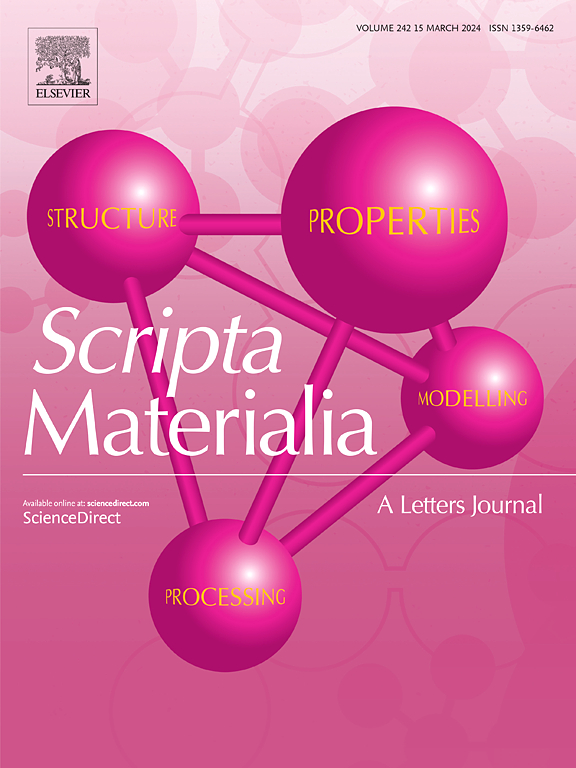A theoretical reassessment of the onset of plastic deformation in single crystals: beyond the Estrin-Kubin framework
IF 5.3
2区 材料科学
Q2 MATERIALS SCIENCE, MULTIDISCIPLINARY
引用次数: 0
Abstract
Dislocations are the fundamental carriers of plastic deformation in single crystals. Their multiplication, interaction, mutual blocking, and annihilation collectively govern the material’s plastic response across all strain regimes. Classical modeling approaches, such as the Kocks-Mecking and Estrin-Kubin formulations, aim to capture these mechanisms through balance equations for free and blocked dislocations.
This manuscript develops a mathematical framework enabling an analytical solution to the Estrin-Kubin equations in both the low- and high-strain limits. The analysis reveals that the model’s validity is confined to a narrow range of parameter values. More critically, the dislocation capture term—intended to account for work hardening—fails to reproduce the observed hardening behavior at early strain stages. The theoretical predictions diverge significantly from experimental observations. In response, an alternative model is proposed, which addresses the limitations of the Estrin-Kubin formulation. Notably, the new model preserves inversion symmetry, a fundamental physical property absents in the original equations.

单晶中塑性变形开始的理论重新评估:超越Estrin-Kubin框架
位错是单晶塑性变形的基本载体。它们的倍增、相互作用、相互阻挡和湮灭共同支配着材料在所有应变状态下的塑性响应。经典的建模方法,如Kocks-Mecking和Estrin-Kubin公式,旨在通过自由位错和阻塞位错的平衡方程来捕捉这些机制。本文发展了一个数学框架,使在低应变和高应变极限下的Estrin-Kubin方程的解析解成为可能。分析表明,该模型的有效性局限于较窄的参数值范围。更关键的是,用来解释加工硬化的位错捕获项不能再现在应变早期阶段观察到的硬化行为。理论预测与实验观察有很大的不同。作为回应,提出了一个替代模型,该模型解决了Estrin-Kubin公式的局限性。值得注意的是,新模型保留了反演对称性,这是原始方程中缺失的基本物理性质。
本文章由计算机程序翻译,如有差异,请以英文原文为准。
求助全文
约1分钟内获得全文
求助全文
来源期刊

Scripta Materialia
工程技术-材料科学:综合
CiteScore
11.40
自引率
5.00%
发文量
581
审稿时长
34 days
期刊介绍:
Scripta Materialia is a LETTERS journal of Acta Materialia, providing a forum for the rapid publication of short communications on the relationship between the structure and the properties of inorganic materials. The emphasis is on originality rather than incremental research. Short reports on the development of materials with novel or substantially improved properties are also welcomed. Emphasis is on either the functional or mechanical behavior of metals, ceramics and semiconductors at all length scales.
 求助内容:
求助内容: 应助结果提醒方式:
应助结果提醒方式:


